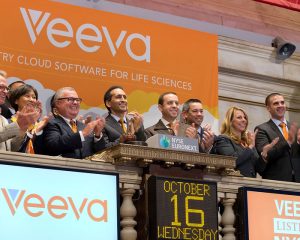Talk about a category leader, over a twelve year period since its founding in 2007, Veeva Systems has evolved into a $23 billion software company dominating in the life sciences space. It provides CRM functionality to large enterprise customers such as GlaxoSmithKline, AstraZeneca, and Eli Lilly among many other life sciences companies. The Company’s stock price has risen eight fold over the last five years.
Public and private investors alike place a high premium on category leaders who are consistent performers. More so, valuation tend to rise when the leader demonstrates an ability to innovate ahead of customer needs. And that’s what Veeva is doing. Recently, it announced new capabilities for its flagship product Veeva Commercial Cloud.
Veeva Andi is a new AI application that will make it easy for customers to adopt, deploy and scale AI. When used with Veeva Customer Journeys, customers can drive the best actions at the right customer stage.
Veeva CRM Approved Notes aims to build better customer relationships and remain compliant at every interaction. Compliance is critical particularly when it comes to off-label messaging. The Notes functionality makes it easy for field reps to capture free text notes.
Veeva Vault Auto Claims Linking uses AI to provide links from claims related references to reduce the administrative hassle and risk of managing claims across countries, channels and assets.
It’s continuous announcement and deployment of new product innovations such as these that help investors hold Veeva in a bright light. Notably, the company does not yet generate over $1 billion in revenue, which translates into an impressive valuation multiple of over 23 times annual revenue.
Veeva Systems was founded in 2007 by Peter Gassner and Matt Wallach. It is based in Pleasanton, CA and went public in 2013. Peter grew up in Portland, Oregon in a middle class household. His parents were Swiss immigrants and had six children; Peter was the third child. He went on to earn a degree in computer science from Oregon State University.























